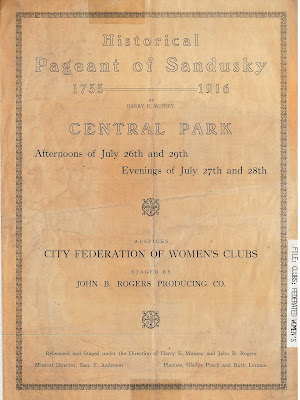From about 1898 to 1902, Albert and Maude Popke ran a
store at 623 Hayes Avenue. (This location is now in the 1500 block of Hayes
Avenue.) The store carried “gents’
furnishings” and other dry goods. Mr.
Popke can be seen in front of the store, which has several men’s shirts on
display in the window.
Maud and two of the Popke children are pictured on a
porch on the side of the business, which is also where the Popke family
resided.
Albert Popke came to the United States from Germany in
the early 1880s. He married Maud Capman on December 21, 1893, according to
records at Erie County Probate Court. Mr. and Mrs. Popke had three children,
Charles Popke, born in 1896; Irene Popke, born in 1896; and Clarence Popke,
born in 1897. By 1915, the Albert Popke family had moved to Perkins Avenue, and Mr. Popke was a foreman at the American Crayon
Company.
Tragedy struck the family when Clarence Popke died of tetanus while he
was in military service during World War I, just one month before the end of the war.
Sadly, tragedy struck the Popke family again on August
17, 1934. Three members of the Popke family were killed when an automobile
driven by Mrs. Popke collided with a Lake Shore Electric Railway passenger car.
Irene Popke and her niece Virginia Popke died instantly, and Mrs. Maud Popke
died at Providence Hospital a short time after the accident.
Albert Popke went on to work for fifty
years at the American Crayon Company. He passed away on February 16, 1945, and was buried at Oakland Cemetery where so many of his family had also been
interred. Albert Popke must have had an amazing strength of character. He left
his homeland, started a business, lost his wife and two of his three children
in untimely deaths, and worked well over fifty years.
If you have ancestors in
Sandusky or Erie County, please visit the Sandusky Library and its Archives
Research Center, where you will find a variety of print and online sources.
City directories, county histories, census records, old yearbooks, obituaries,
and many other resources can help you trace your own family roots.

 this blog
this blog










































